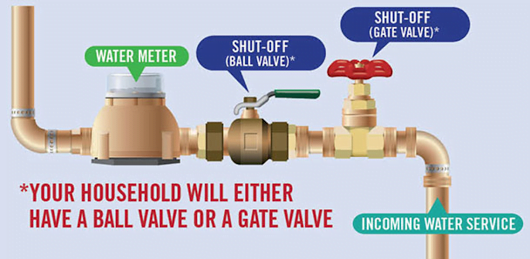Leak Detection
Preventing water waste helps to conserve this vital resource while saving money.
The main sources of water waste are leaks, indoor overuse, and outdoor over-watering of lawns and gardens. You may not realize you have a leak until you receive your water bill. Many leaks may go unnoticed, but they can be costly. Following these steps can help conserve water and reduce your water bill.
Finding leaks
Using your water meter
- Locate the meter: Find the low flow indicator or sweep hand on your water meter.
- Check for movement: Ensure no water is being used in your home. If the indicator moves, you likely have a leak.
Checking your toilet
- Add food colouring: Put a few drops in the toilet tank.
- Wait 10 minutes: If colour appears in the bowl, you have a leak.
Visual inspection
- Inspect faucets and pipes: Look for drips or moisture.
- Check appliances: Ensure dishwashers and washing machines are not leaking.
What to do if you find a leak
- Fix it promptly: Repairing leaks can save thousands of litres of water annually.
- Seek professional help: If you can’t fix it yourself, hire a plumber.
How to turn off your water while you are away
Unless your house uses water for heading, shut off the water if it will be unoccupied, even for a weekend.
- Close the main shut-off valve.
- Open faucets to relieve pressure.

If there is no main valve, close the individual valves for toilets, sinks, tubs, and washing machines.
For seasonal homes, Call 519-426-5870 or 226-NORFOLK, extension 0, to arrange water shut-off and get fee details. For account payments while away, contact ERTH Corporation at 1-877-485-6050 or visit their website.
Contact Us
ServiceNorfolk
50 Colborne Street South
Simcoe, Ontario
N3Y 4H3
Phone: 519-426-5870 or 226-NORFOLK, extension 0




